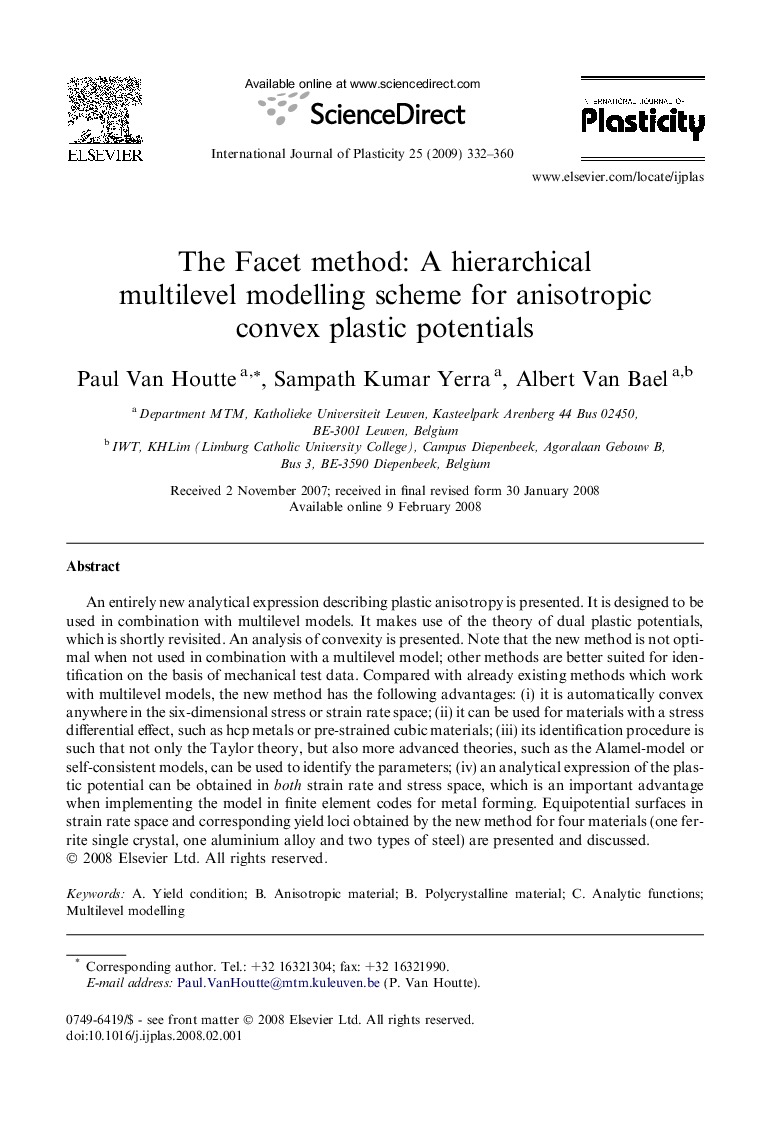| Article ID | Journal | Published Year | Pages | File Type |
|---|---|---|---|---|
| 786571 | International Journal of Plasticity | 2009 | 29 Pages |
An entirely new analytical expression describing plastic anisotropy is presented. It is designed to be used in combination with multilevel models. It makes use of the theory of dual plastic potentials, which is shortly revisited. An analysis of convexity is presented. Note that the new method is not optimal when not used in combination with a multilevel model; other methods are better suited for identification on the basis of mechanical test data. Compared with already existing methods which work with multilevel models, the new method has the following advantages: (i) it is automatically convex anywhere in the six-dimensional stress or strain rate space; (ii) it can be used for materials with a stress differential effect, such as hcp metals or pre-strained cubic materials; (iii) its identification procedure is such that not only the Taylor theory, but also more advanced theories, such as the Alamel-model or self-consistent models, can be used to identify the parameters; (iv) an analytical expression of the plastic potential can be obtained in both strain rate and stress space, which is an important advantage when implementing the model in finite element codes for metal forming. Equipotential surfaces in strain rate space and corresponding yield loci obtained by the new method for four materials (one ferrite single crystal, one aluminium alloy and two types of steel) are presented and discussed.
